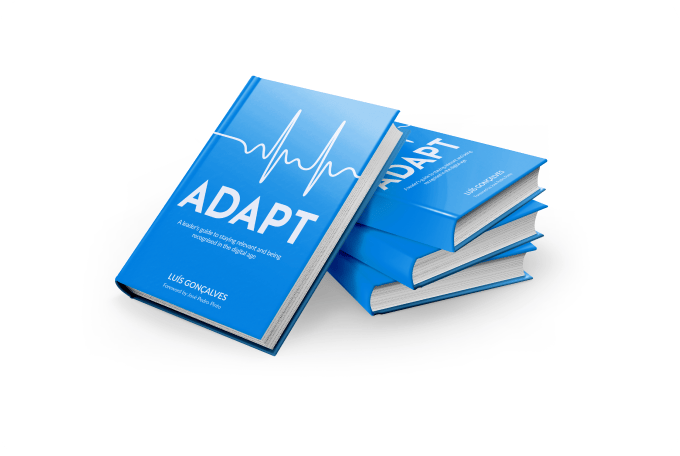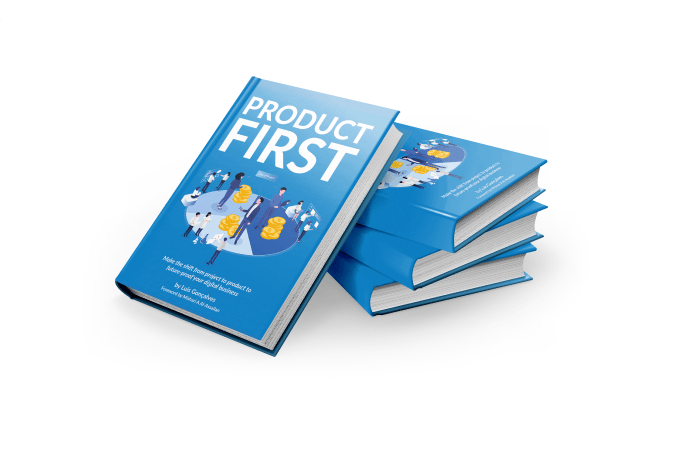Share this
Regression Testing: Securing the Software Lifeline
by Mário Figueira on Jan 13, 2024 6:16:24 AM
In the transformative journey from project to product, regression testing emerges as an indispensable ally, underpinning a seamless evolution. As functionalities evolve and grow in complexity, the landscape becomes fertile ground for potential errors that could derail the system's stability.
Here, regression testing acts as a vigilant sentinel, ensuring that new increments not only align with the existing architecture but enhance it, fostering a product that is robust, reliable, and ready to meet the user's needs with unyielding efficiency and stability. It stands not just as a mandate, but as a beacon of quality assurance in the project to product transformation.
In the fast-paced and dynamically changing landscape of software development, where deployments happen in a continuous fashion, regression testing stands as the sentinel ensuring the reliability and stability of the system.
As we delve deeper into regression testing, it is pertinent to illuminate every facet of this testing strategy that plays a pivotal role in the sustenance and smooth functioning of applications in various production environments. This discussion accentuates the methodologies, types, benefits, and challenges associated with regression testing, exploring its integral place in software development lifecycles.
ADAPT Methodology® is a unique Digital Product Development framework to change traditional project-centric companies toward product-led companies!
Society changed and leaders need support in the way they lead and design their digital product organizations, that is the reason why the ADAPT Methodology® was created.
But now let us delve deep to understand why Regression Testing is so important.
Defining Regression Testing
Regression testing is a quality assurance process that ensures that recently developed and deployed code does not adversely affect the exising functionality of the system. It is a verification strategy applied to confirm that the recent changes in the code, such as enhancements, patches, and configurations, have not introduced new faults or resurrected previously resolved issues.
Role in Software Development Lifecycle
Within the comprehensive framework of software development, regression testing manifests at various stages – from initial development to maintenance. While it is a vital part of the unit and integration testing phases, it finds pronounced significance in the maintenance phase where it guarantees that updates and bug fixes do not birth new errors.
By incorporating regression testing in continuous integration and continuous deployment (CI/CD) pipelines, development teams can foster a resilient system, shielding it from regressive anomalies.
Regression Testing Methodologies
Corrective Regression Testing
In corrective regression testing, testers focus on the sections of code that have undergone changes, ensuring that the corrections do not spawn new bugs. This methodology often leverages a selective strategy where only a subset of the test cases is executed.
Progressive Regression Testing
Here, the emphasis is on testing new functionalities added to the system, affirming that the new additions harmoniously integrate without causing disruptions in the existing functionality.
Full Regression Testing
A comprehensive approach where all the test cases in the test suite are executed, providing a full-fledged validation of the system. This methodology is resource-intensive but offers the highest assurance level.
Types of Regression Testing
Understanding the varied types of regression testing offers a granular perspective into the different strategies that can be employed to validate system stability.
Unit Regression
This involves testing the smallest parts of an application independently to ensure that recent code changes at the unit level have not induced faults.
Partial Regression
Partial regression testing encompasses validating a subset of the application functionalities, focusing on the areas impacted by recent code alterations.
Complete Regression
In complete regression testing, the entire application is tested, offering a bird’s-eye view of the system’s health post-recent changes.
Automated versus Manual Regression Testing
Regression testing can be carried out both manually and through automated means. While manual testing can be resource and time-consuming, it allows for nuanced verification processes. Conversely, automated regression testing, driven by scripted tests and frameworks, brings in efficiency and consistency, facilitating a faster and more reliable testing cycle.
Benefits of Regression Testing
Risk Mitigation
Regression testing acts as a risk mitigatory strategy, preventing the incursion of bugs into the production environment, which could potentially lead to system downtimes and reduced user satisfaction.
Improved Software Quality
By continually validating the software’s functionality, regression testing ensures a high-quality end product, fostering a reliable and robust system.
Cost-Effectiveness
By identifying issues early in the development cycle, regression testing helps in reducing the costs associated with late bug detection and fixing, driving down the total project costs.
Challenges and Mitigations in Regression Testing
Resource Constraints
Regression testing can be resource-intensive. Adopting a risk-based approach where critical functionalities are tested preferentially can be a way forward.
Test Case Optimization
Over time, test suites can become bulky. Implementing test case optimization strategies such as test case prioritization can mitigate this issue.
Alignment with Continuous Deployment
In a CI/CD environment, there is a constant flux of changes. Aligning regression testing with such environments requires automation and intelligent test design strategies that allow for quick and reliable validations.
Best Practices in Regression Testing
Regular Updating of Test Cases
It is essential to continuously update the regression test suites to include tests for new functionalities while removing obsolete ones, ensuring a current and relevant testing landscape.
Combining Automated and Manual Testing
A hybrid approach involving both automated and manual testing often yields the best results, bringing together the efficiency of automation and the nuance of manual verification.
Use of Metrics
Leveraging metrics to analyze and report the results of regression testing can offer deep insights into the system’s health, facilitating informed decision-making.
Tooling in Regression Testing
Selenium
Selenium stands as a popular choice for automating web applications, aiding in the rapid execution of regression test suites.
JUnit
In Java development environments, JUnit facilitates unit regression testing, supporting the validation of individual units or components of a software.
TestNG
An extension of JUnit, TestNG allows for more comprehensive testing including unit, functional, end-to-end, integration, etc., fostering a holistic regression testing environment.
Integrating Regression Testing in Agile and DevOps
Agile Environments
In Agile environments, where changes are frequent and iterative, regression testing ensures that each sprint maintains the software’s integrity, acting as a continuous validation mechanism.
DevOps
In DevOps culture, where integration and delivery are continuous, automated regression testing facilitates a seamless and constant verification process, nurturing reliability in rapidly evolving software ecosystems.
Understanding the Cost-Benefit Dynamics
As organizations stride forward in enhancing their software solutions, understanding the cost-benefit dynamics of regression testing becomes crucial. While it's a resource-intensive process, the potential savings from avoiding system downtimes and preserving brand reputation often significantly outweigh the initial costs.
The Future of Regression Testing
Looking ahead, regression testing is poised to embrace artificial intelligence (AI) and machine learning (ML) methodologies, offering predictive analytics and intelligent test case design and selection strategies. The integration of AI/ML would foster more efficient and effective regression testing processes, paving the way for smart testing ecosystems.
Conclusion
In conclusion, regression testing stands as a pillar of reliability in the software development lifecycle, ensuring the harmonious coexistence of new functionalities with the existing system components. Through meticulous methodologies and diverse testing strategies, it safeguards the system’s stability, offering a protective shield against regressive bugs and faults.
The multifaceted nature of regression testing, extending from unit regression to complete regression testing, accompanied by a rich tool ecosystem and aligned with Agile and DevOps methodologies, stands as a robust pillar in the software development landscape.
As we forge ahead into a future where software systems underpin almost every aspect of our daily lives, the role of regression testing will only amplify, guarding the gates of functionality and ensuring that with every step forward, there is no step back. It implores us to be vigilant, to be thorough, and to harbor an unyielding dedication to quality, guiding us in crafting software solutions that are not just functional, but flawless.
Through a detailed exploration of regression testing methodologies, real-world applications, tooling ecosystems, and future prospects, we have traversed a journey from understanding its elemental concept to envisioning a future enriched with artificial intelligence and machine learning. In this dynamically evolving landscape, regression testing remains the fulcrum, balancing innovation with stability, and steering the software development arena towards a horizon of unremitting growth and unyielding reliability.
In this ode to regression testing, we find a narrative of resilience, a commitment to excellence, and a dedication to crafting software narratives that stand the test of time, offering users experiences that are not just satisfactory but truly exceptional. It is not just a testing methodology, but a philosophy, an ethos rooted in quality, inviting us to forge pathways of software development that are secure, reliable, and poised for success in a world driven by digital excellence.
Did you like this article?
We enable leaders to become highly valued and recognized by adapting their project-centric company into a product-led company, society changed and leaders need support to adapt their companies to the digital era, that is the reason why the ADAPT Methodology® was created!
If you are interested in knowing if your company is a project-centric or a product-led company simply take our Project To Product Scorecard.
If you want to know how we can help you to start your transformation please check out our: Project To Product Training.
If you are interested in doing a transformation in your company please check out our: Project To Product Consulting.
Share this
- Agile Methodologies (18)
- Product Strategy (18)
- OKRs (16)
- Scrum (16)
- Product Mindset (14)
- Project To Product (10)
- Agile Retrospectives (9)
- CoPs (9)
- Knowledge Sharing (9)
- Time To Market (8)
- Product Discovery (7)
- Continuous Improvement (5)
- Strategy (5)
- Scrum Master (4)
- Content Marketing Strategy (3)
- Product Owner (3)
- Technical Excellency (3)
- Digital Transformation (2)
- Innovation (2)
- Scaling (2)
- Team Building (2)
- Business Model (1)
- Cost Of Delay (1)
- Customer Feedback (1)
- Customer Journey (1)
- Customer Personas (1)
- Design Thinking (1)
- Digital Leadership (1)
- Digital Product Tools (1)
- Go To Market Strategy (1)
- Google Design Sprint (1)
- Lean Budgeting (1)
- Lean Change Management (1)
- Market Solution Fit (1)
- Organisational Impediments (1)
- Outsourcing (1)
- Product (1)
- Product Metrics (1)
- Product Roadmaps (1)

Organisational Mastery
Get your free copy

ADAPT
Get your free copy

Product First
Get your free copy

